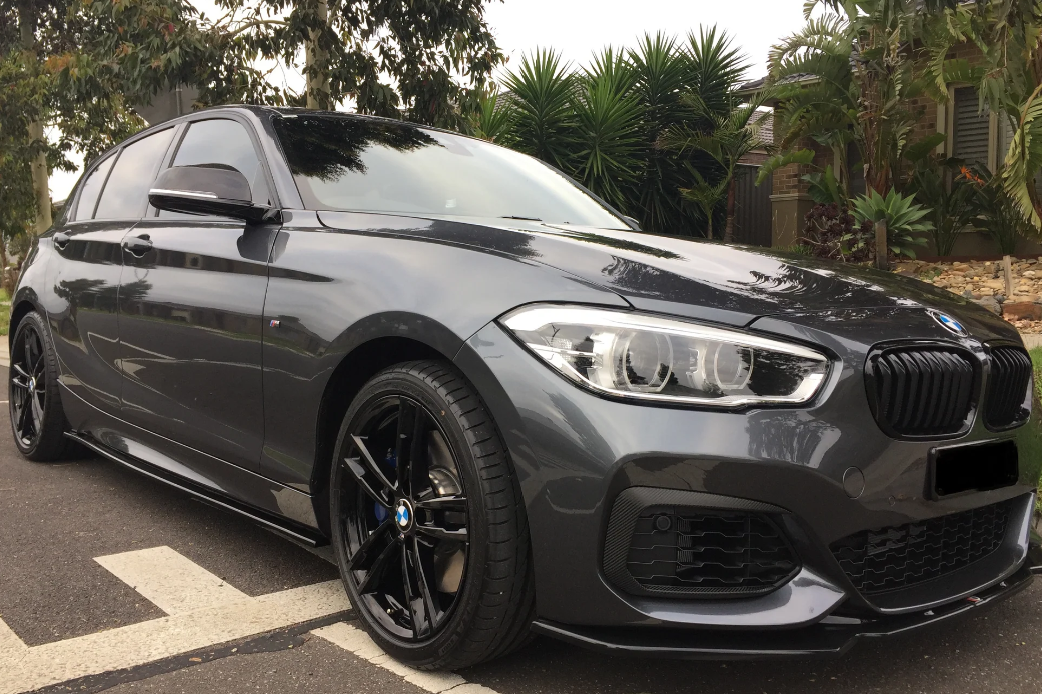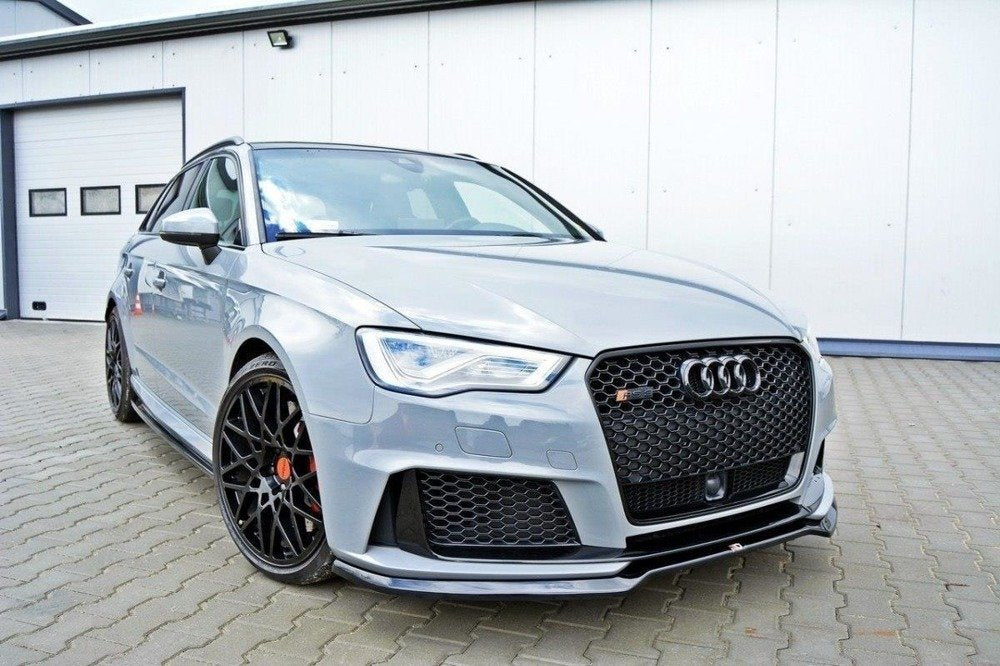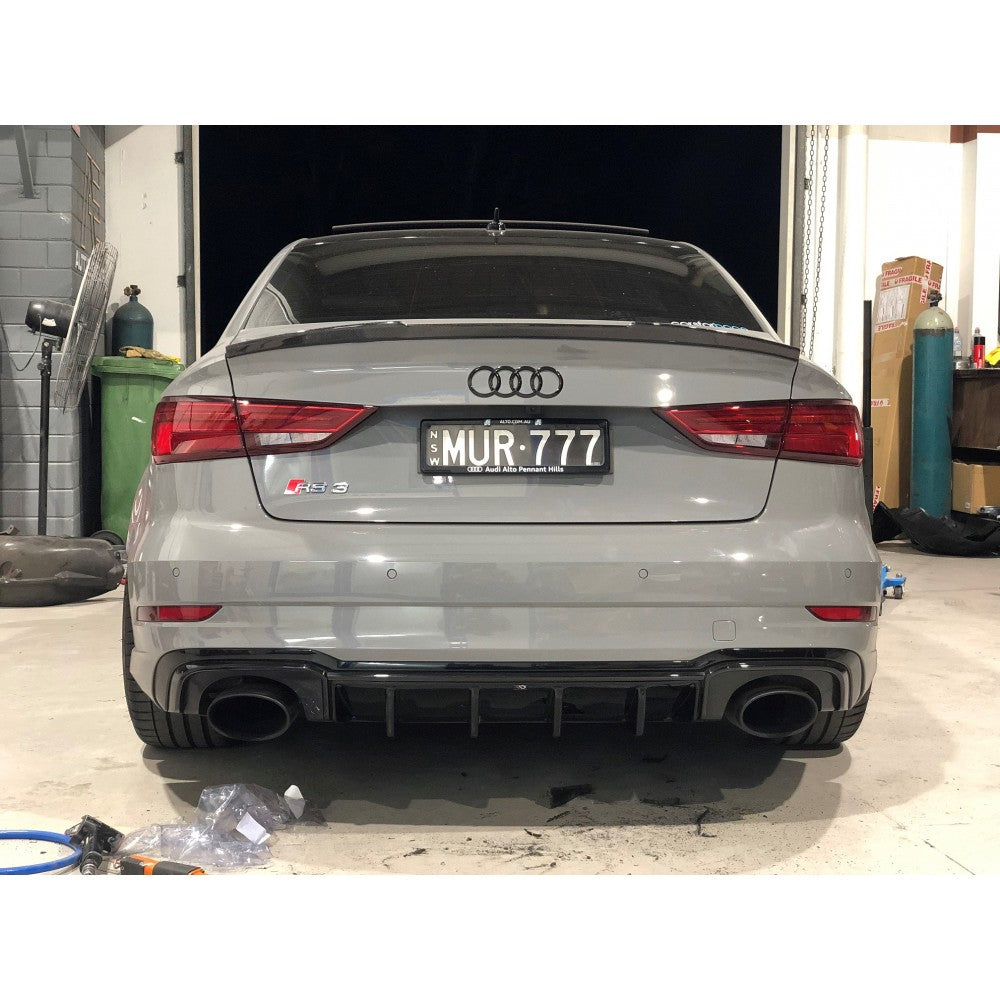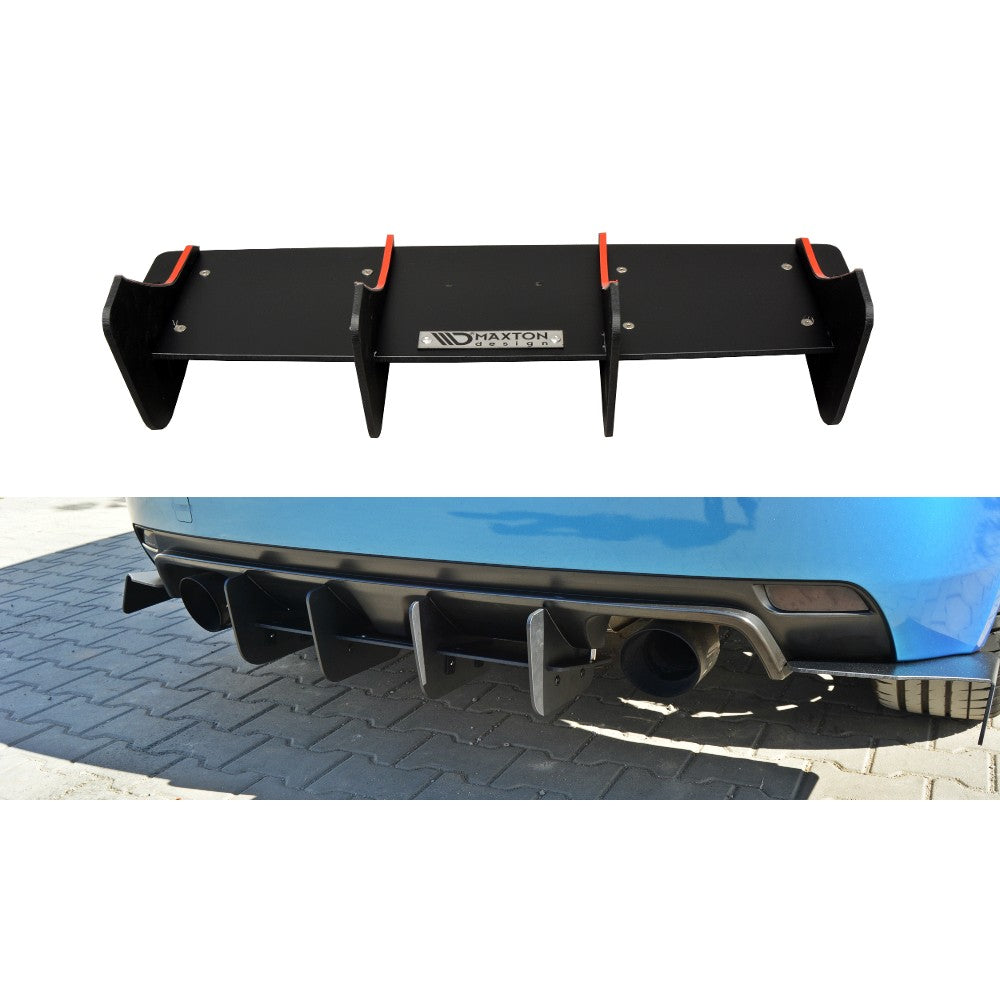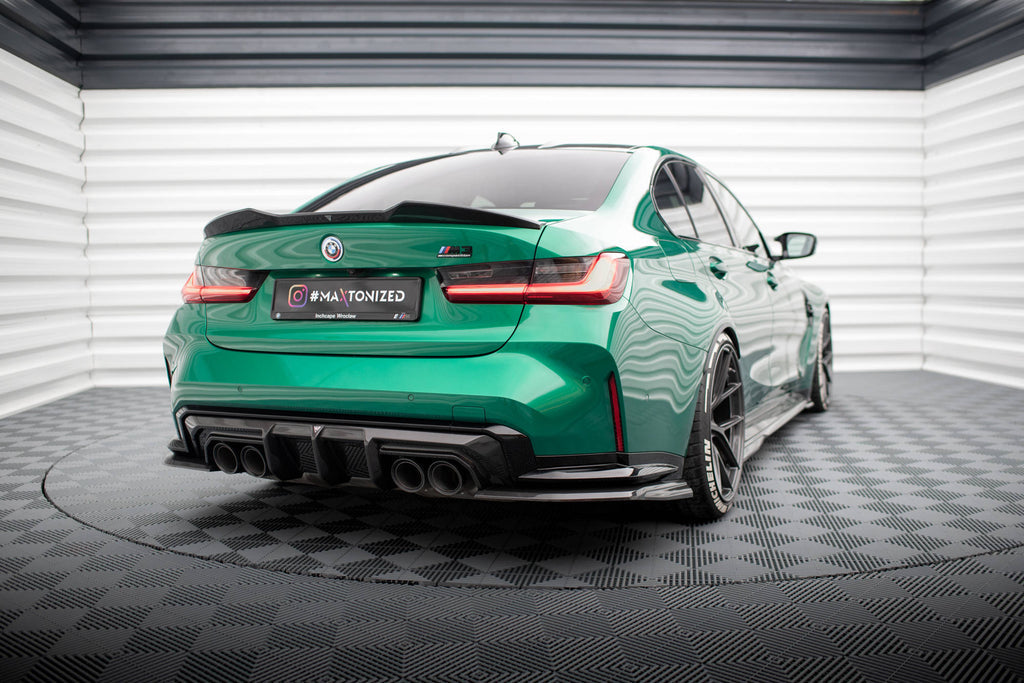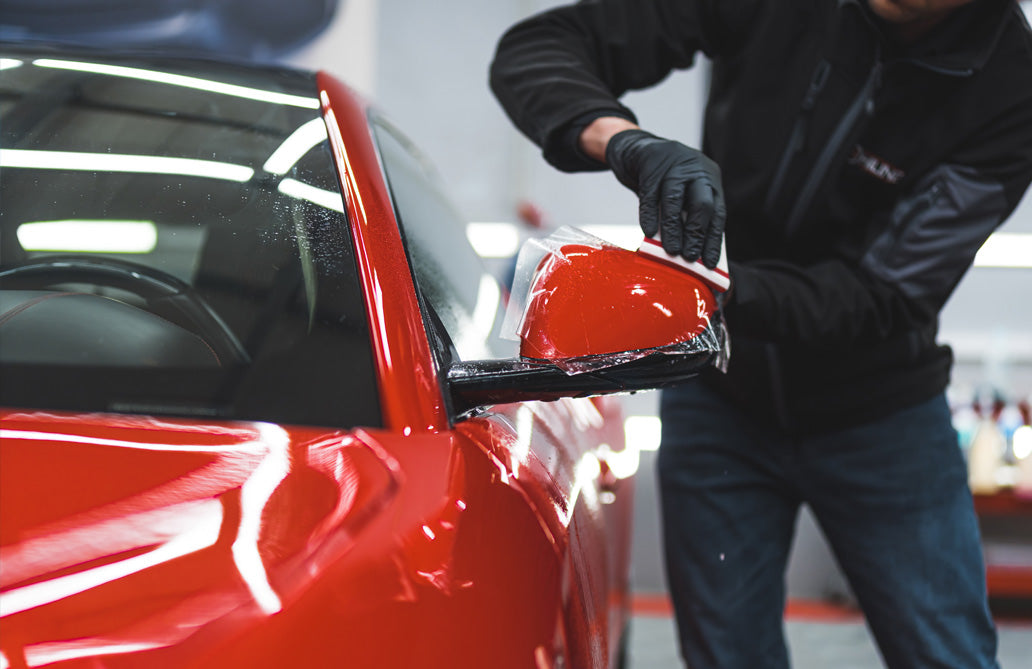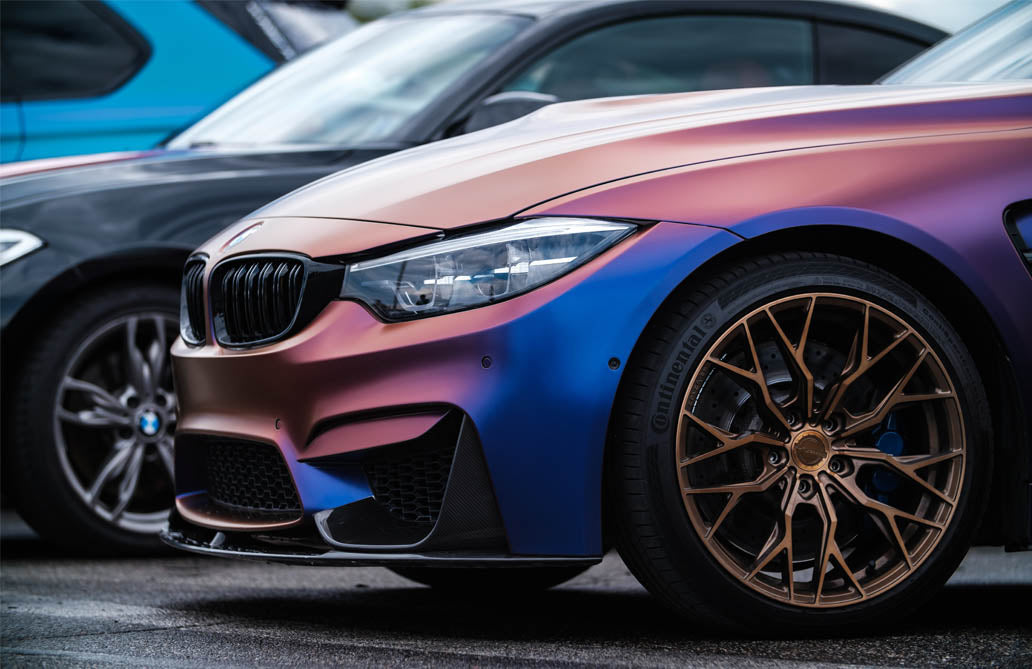For some people, a car is a simple mode of transportation to get them from A to B, but for lots of other people, their car is their pride and joy – even an extension of their personality and style.
Car lovers look for ways to individualise and nurture their cars, and one of the simplest way to do this is with a car body kit. Body kits not only improve the aesthetics of your car but also enhance performance, but what exactly is a car body kit?
Well, in this piece, we’ll give you the insight into car body kits, including what they are, what they are used for and the different kinds of body kits you can expect to find.
As Australia’s leading supplier of body kits, we’re here to give you our inside knowledge.
What exactly is a car body kit?
Usually made of materials like polyurethane, fiberglass, carbon fibre, or aluminium, a car body kit is like an accessory for the exterior of your car to change the way it looks and drives. Car body kits are usually made up of various exterior parts, like side skirts, diffusers, spoilers, and bumpers for the front and back of the car.
Body kits can make your car look quite different, even giving it a more curved or wider appearance, allowing you to create a more customised look for your car.
Many different kinds of body kits exist and there are options available for almost any brand and make of car.
Why do people buy car body kits?
There are three main reasons why people buy car body kits, and these are:
- To improve or customise the appearance of their car.
- To enhance the performance of the car.
- To replace a broken or damaged part of a car.
As we touched on above, a car body can totally transform the way a car looks and feels when you’re driving it. Some people want their cars to appear sleeker or more aggressive, while others want it to feel different when it drives by improving the aerodynamics of the car.
Adding a spoiler to a car can change the appearance and make it look more like a racing car, while using a body kit that includes a new hood or bonnet made of a light material like carbon fibre could be a way to improve the performance of a car.
A body kit can also be a simple way to repair car damage, like scraped bumpers or mirrors that have been knocked off the car.
There’s no right or wrong reason to get a car body kit – you may want to change the way your car looks, drives, or to fix damage, or a mix of all these reasons.
What are the different types of body kits for cars?
As we mentioned earlier, body kits can be found for basically any brand or car model. On top of this, there are a number of different types of body kits depending on where you need the body kit on the car and its purpose. Below are some of the most common types of body kits you can get:
Lip Body Kits:
Lip kits are popular among car enthusiasts seeking a subtle yet effective modification. Usually consisting of a front lip spoiler and sometimes a rear lip spoiler, these kits enhance the lower portion of the vehicle's bumpers. Lip kits not only add a touch of sportiness and visual appeal to the car's exterior, but they also improve aerodynamics by reducing airflow under the vehicle, which can minimise lift and enhance stability at higher speeds.
Side Skirts Body Kits:
Side skirts are an essential component of many body kits, providing a visually cohesive look and enhancing the vehicle's aerodynamics. Typically installed along the lower side of the car, side skirts create a sleek and lowered appearance. Their primary function is to smoothen airflow along the vehicle's sides, minimising turbulence and reducing drag. Side skirts can also provide additional structural support to the car's body, especially during high-speed cornering.
Diffuser Body Kits:
Diffuser body kits are designed to improve the aerodynamic efficiency of a vehicle's rear end. Positioned beneath the rear bumper, they feature sculpted fins and channels that help manage airflow and reduce drag. Diffusers work by creating a low-pressure area at the rear of the vehicle, allowing air to flow smoothly and efficiently. By improving aerodynamics, diffusers can enhance stability, especially at higher speeds, and give the car a more aggressive and sporty appearance.
Spoiler Body Kits:
Spoilers are perhaps the most recognisable and widely used body kit accessory. They are typically mounted on the rear trunk or hatch and serve multiple purposes. Spoilers are designed to disrupt the flow of air over the vehicle, reducing lift and increasing downforce, which improves traction and stability. They can also improve high-speed cornering by enhancing rear-end grip. Additionally, spoilers can add a touch of sportiness and enhance the overall visual appeal of the vehicle.
Bumper Body Kits:
Bumper body kits typically include front and rear bumpers that replace the stock ones on a vehicle. These kits are popular for their ability to completely transform the appearance of a car, giving it a more aggressive and distinctive look. Bumper body kits often feature unique designs, integrated air intakes, and diffusers, enhancing both aesthetics and aerodynamics. They may also provide additional protection and improved airflow to essential components, such as the engine and brakes.
Wide Body Kits:
Wide body kits are for those looking to make a bold and dramatic statement. These kits extend the width of the vehicle's body by adding wider fenders, side skirts, and sometimes a modified front and rear bumper. Wide body kits not only give the car a significantly wider stance but also allow for larger wheels and tires. They are popular among performance enthusiasts who desire increased traction, improved handling, and a more aggressive appearance.
Window Visors and Weather Shield Body Kits:
Window visors, also known as rain guards or wind deflectors, are small attachments installed on the top of the car's windows. These kits serve a practical purpose by deflecting rainwater and preventing it from entering the vehicle when the windows are partially open. Additionally, they can help reduce wind noise and provide some shade from the sun, allowing for a more comfortable driving experience in various weather conditions.
Full Body Kits:
As the name suggests, full body kits encompass multiple components, including front and rear bumpers, side skirts, fenders, and sometimes spoilers. These kits offer a complete exterior makeover and are favoured by car enthusiasts seeking a cohesive and comprehensive transformation. Full body kits allow for a harmonious integration of various styling elements, resulting in a distinct and personalised appearance for the vehicle. They are ideal for those who desire a comprehensive and impactful visual upgrade.

Body Kit Materials – What are Body Kits Made of?
Body kits can be made of a wide range of materials with each option having pros and cons. When choosing a body kit, it's important to consider that the choice of material. The material you choose can depend on various factors, including personal preferences, budget, desired performance enhancements, and intended usage. Each material has its own strengths and considerations, and it's essential to select the one that aligns with your specific needs and goals.
Here are the most common car body kit material types:
Polyurethane:
Polyurethane is a popular material for body kits due to its flexibility, durability, and ease of installation. It can withstand minor impacts without cracking or breaking, making it suitable for daily driving and areas prone to bumps or curbs. Additionally, polyurethane is resistant to UV rays, meaning it won't fade or discolour over time, ensuring long-lasting aesthetics for your body kit.
Fiberglass:
Fiberglass is a lightweight and cost-effective material commonly used in body kits. Its strength-to-weight ratio makes it ideal for enhancing performance without adding excessive weight to the vehicle. Fiberglass body kits are also relatively easy to mould and shape, allowing for intricate and custom designs. However, fiberglass can be more prone to cracking or breaking upon impact compared to other materials.
Carbon Fibre:
Carbon fibre is highly sought after in the automotive world for its exceptional strength and lightweight properties. It offers the best balance between rigidity and weight reduction, making it a preferred choice for performance-oriented body kits. Carbon fibre body kits not only enhance the visual appeal of the vehicle but also improve aerodynamics. The material's high tensile strength and resistance to heat and UV rays make it a durable and long-lasting option.
Aluminium:
While less commonly used than other materials, aluminium can be found in some body kits, especially for certain structural components. Aluminium is lightweight, corrosion-resistant, and offers excellent strength. It can provide structural support while minimising added weight, making it suitable for enhancing both performance and aesthetics. Aluminium body kits are often preferred in racing applications due to their durability and rigidity.
How do I choose a car body kit?
When deciding on a body kit for your car, you need to think about whether you’re trying to change the way your car looks or its performance, or if you’re simply trying to fix some damage to your car.
As we said earlier, there’s no right or wrong answer here, but it’s important to understand your goals as this can make choosing the right body kit a lot easier.
We also recommend talking to someone that knows cars and knows body kits, especially if you’re not sure where to start. Car forums are a good place to find people to talk as are professional car body kit installers, and even us here at AusBody Works. You can get in touch with us and let us know what you’re trying to do, and we can help steer you in the right direction.
Do I install a car body kit myself or does it have to be done professionally?
DIY body kits or hiring a professional to install it is completely dependent on your situation. If you feel comfortable tackling it yourself, there’s no reason you can’t, it might just take time and be tricky but there are lots of body kits that can be easy to install yourself.
For the best results and for faster installation, working with a professional is the easiest option.
What are the most common problems people have with car body kits?
While body kits can greatly enhance the appearance and performance of a vehicle, there are a few common problems and issues that people may encounter when installing or using them:
- Fitment and Installation: One of the primary challenges with body kits is ensuring proper fitment and installation. Body kits are often designed for specific makes and models, and variations in manufacturing tolerances can lead to issues with alignment, gaps, or difficulty in mounting. It is recommended to seek professional installation or work with experienced individuals to ensure a precise fit and alignment.
- Quality and Durability: The quality of body kits can vary significantly depending on the manufacturer and materials used. Lower-quality kits may have issues with durability, such as cracking, fading, or peeling over time. It is essential to research reputable brands and materials to ensure the longevity of the body kit. Investing in high-quality kits may cost more initially but can save money and frustration in the long run.
- Ground Clearance and Accessibility: Some body kits, particularly those with lower front bumpers or side skirts, can reduce ground clearance and potentially lead to scraping or damage when navigating speed bumps, curbs, or uneven terrain. Additionally, certain body kits may obstruct access to essential components like the oil pan or exhaust system, requiring additional modifications or adjustments for proper clearance and maintenance.
- Legal and Compliance Issues: Body kits that significantly alter the vehicle's dimensions or alter lighting placements may not comply with local regulations or safety standards. It is crucial to check and understand local laws regarding body kit modifications, including bumper heights, lighting requirements, and any necessary certifications or inspections. Failure to comply with these regulations may result in fines, failed inspections, or even legal issues.
- Insurance and Warranty Implications: Modifying a vehicle with a body kit may affect insurance coverage and warranties. Some insurance companies may require specific documentation or premium adjustments for modified vehicles. Additionally, modifications can potentially void certain aspects of the manufacturer's warranty. It is advisable to consult with your insurance provider and review your warranty terms to understand any implications before installing a body kit.
By being aware of these potential issues and taking the necessary precautions, enthusiasts can enjoy the benefits of a body kit while mitigating any associated challenges. Proper research, professional installation, and compliance with regulations are key to ensuring a positive and trouble-free experience with body kits.
Where to buy a car body kit in Australia?
Car body kits offer a captivating way to elevate your vehicle's appearance and performance. Whether you're seeking subtle enhancements or bold transformations, the world of body kits offers endless possibilities. If you're in Australia and looking for a reliable source to purchase high-quality body kits, AusBody Works stands out as an exceptional option. With their extensive range of body kits, including front and rear bumpers, side skirts, spoilers, and more, AusBody Works caters to a wide range of tastes and preferences. Their commitment to craftsmanship, attention to detail, and customer satisfaction sets them apart as a trusted provider in the industry. Visit AusBody Works to discover the perfect body kit that will unlock a new level of style and customisation for your cherished ride.

